Greepeace says that in Galicia there are 6.000 illegal housings and 800.000 in project
The international environmental organization Greenpeace has reported this Tuesday that in Galicia he(she) has constructed 6.000 illegal housings and they are hanging of building in the next years other 800.000, the majority you come second investigate, in 86 municipalities of the littoral. Greenpeace calls the attention of which in the community there are, according to the National Institute of Statistics, 300.000 empty houses and remembers, in a communiqué, that Galicia is between(among) the zones most investigated by the justice by cases of urban development corruption.
Also it(he,she) is outlined of that 17 sports ports are going to be extended to give content to 6.278 ties, with the serious problems of coastal pollution that he(she) carries. It(he,she) denounces the high place descontrol urban development and the number of mayors and councilmen imputed by crimes of this nature provided that the Físcalía investigates the municipalities of Arteixo, Cambre, Fisterra, Mugardos, Pontedeume and I carry do They are, in To Corunna, and those of Tui, To Highway and Or Grove, in Pontevedra.
He(She) remembers that the " real-estate excesses " forced the Autonomous government of Galicia to suspend Tui's urban development plannings, To Highway, Or Grove and Ponteareas, in Pontevedra; Sada and Teo, in To Corunna, and Viveiro and Barreiros, in Lugo. In addition, the Autonomous government of Galicia supports eleven contentious ones against the construction of licenses in Malpica, Fisterra and Barreiros, whereas they find in review the urban development plans of Vigo, Gondomar, Ourense and Foz.
The architects' colleges visaron in the last years 125.000 housings, of which more than the half, according to the Department of the Housing, they are the second residence. Greenpeace foresees that the Galician community will notice specially in 2050 the raise of the level of the sea in approximately 35 centimeters with what what must bear these forecasts in mind at the moment of designing new ports and of constructing maritime walks, dikes and stings of an insect, because it will be necessary to increase the size of all these structures in 50 % to protect them from the raise of the level of the sea and from the major force of the temporary ones.
" Another threat for the coastal Galician way is the pollution accumulated in his(her,your) laugh and coasts ", it reports in the writing, provided that the Autonomous government of Galicia recognizes that 37 % of the municipalities of more than 2.000 inhabitants lacks a system of waste water treatment. Also the spillages of fecal Vigo and Arousa affect to wide zones Baiona's seafood shops, Pontevedra, To Corunna, Corcubión, in whose(which) waters the species(kinds) extracted seafood shops it is not possible to commercialize in fresh air(fresco) until they happen(pass) for the filter systems.
"It is necessary start punctual measures to limit the excessive growth of the urbanization, the second residences, the golf courses and the sports ports " and asks for " global measures " for the integral protection of the littoral and the establishment of a Network(Net) of Marine Reservations(Reserves) that safeguards and revalues the coast, concludes.
The international environmental organization Greenpeace has reported this Tuesday that in Galicia he(she) has constructed 6.000 illegal housings and they are hanging of building in the next years other 800.000, the majority you come second investigate, in 86 municipalities of the littoral. Greenpeace calls the attention of which in the community there are, according to the National Institute of Statistics, 300.000 empty houses and remembers, in a communiqué, that Galicia is between(among) the zones most investigated by the justice by cases of urban development corruption.
Also it(he,she) is outlined of that 17 sports ports are going to be extended to give content to 6.278 ties, with the serious problems of coastal pollution that he(she) carries. It(he,she) denounces the high place descontrol urban development and the number of mayors and councilmen imputed by crimes of this nature provided that the Físcalía investigates the municipalities of Arteixo, Cambre, Fisterra, Mugardos, Pontedeume and I carry do They are, in To Corunna, and those of Tui, To Highway and Or Grove, in Pontevedra.
He(She) remembers that the " real-estate excesses " forced the Autonomous government of Galicia to suspend Tui's urban development plannings, To Highway, Or Grove and Ponteareas, in Pontevedra; Sada and Teo, in To Corunna, and Viveiro and Barreiros, in Lugo. In addition, the Autonomous government of Galicia supports eleven contentious ones against the construction of licenses in Malpica, Fisterra and Barreiros, whereas they find in review the urban development plans of Vigo, Gondomar, Ourense and Foz.
The architects' colleges visaron in the last years 125.000 housings, of which more than the half, according to the Department of the Housing, they are the second residence. Greenpeace foresees that the Galician community will notice specially in 2050 the raise of the level of the sea in approximately 35 centimeters with what what must bear these forecasts in mind at the moment of designing new ports and of constructing maritime walks, dikes and stings of an insect, because it will be necessary to increase the size of all these structures in 50 % to protect them from the raise of the level of the sea and from the major force of the temporary ones.
" Another threat for the coastal Galician way is the pollution accumulated in his(her,your) laugh and coasts ", it reports in the writing, provided that the Autonomous government of Galicia recognizes that 37 % of the municipalities of more than 2.000 inhabitants lacks a system of waste water treatment. Also the spillages of fecal Vigo and Arousa affect to wide zones Baiona's seafood shops, Pontevedra, To Corunna, Corcubión, in whose(which) waters the species(kinds) extracted seafood shops it is not possible to commercialize in fresh air(fresco) until they happen(pass) for the filter systems.
"It is necessary start punctual measures to limit the excessive growth of the urbanization, the second residences, the golf courses and the sports ports " and asks for " global measures " for the integral protection of the littoral and the establishment of a Network(Net) of Marine Reservations(Reserves) that safeguards and revalues the coast, concludes.
,
EN ESPAÑOL
.Greepeace dice que en Galicia hay 6.000 viviendas ilegales y 800.000 en proyecto
La organización internacional ecologista Greenpeace ha informado este martes de que en Galicia hay construidas 6.000 viviendas ilegales y están pendientes de edificar en los próximos años otras 800.000, la mayoría segundas residencias, en 86 municipios del litoral. Greenpeace llama la atención de que en la comunidad hay, según el Instituto Nacional de Estadística, 300.000 casas vacías y recuerda, en un comunicado, que Galicia se encuentra entre las zonas más investigadas por la justicia por casos de corrupción urbanística.
También se destaca de que se van a ampliar 17 puertos deportivos para dar cabida a 6.278 amarres, con los graves problemas de contaminación costera que conlleva. Denuncia el alto descontrol urbanístico y el número de alcaldes y concejales imputados por delitos de esta naturaleza dado que la Físcalía investiga los municipios de Arteixo, Cambre, Fisterra, Mugardos, Pontedeume y Porto do Son, en A Coruña, y los de Tui, A Estrada y O Grove, en Pontevedra.
Recuerda que los "excesos inmobiliarios" obligaron a la Xunta a suspender los planeamientos urbanísticos de Tui, A Estrada, O Grove y Ponteareas, en Pontevedra; Sada y Teo, en A Coruña, y Viveiro y Barreiros, en Lugo. Además, la Xunta mantiene once contenciosos contra la construcción de licencias en Malpica, Fisterra y Barreiros, mientras que se encuentran en revisión los planes urbanísticos de Vigo, Gondomar, Ourense y Foz.
Los colegios de arquitectos visaron en los últimos años 125.000 viviendas, de las que más de la mitad, según el Ministerio de la Vivienda, son segunda residencia. Greenpeace prevé que la comunidad gallega notará especialmente en el 2050 la subida del nivel del mar en unos 35 centímetros con lo que lo que se debe tener en cuenta estas previsiones a la hora de diseñar nuevos puertos y de construir paseos marítimos, diques y espigones, porque será necesario aumentar el tamaño de todas estas estructuras en un 50% para protegerlas de la subida del nivel del mar y de la mayor fuerza de los temporales.
"Otra amenaza para el medio costero gallego es la contaminación acumulada en sus rías y costas", informa en el escrito, dado que la Xunta reconoce que el 37% de los municipios de más de 2.000 habitantes carecen de un sistema de depuración de aguas residuales. También los vertidos de fecales afectan a amplias zonas marisqueras de Baiona, Pontevedra, A Coruña, Corcubión, Vigo y Arousa, en cuyas aguas las especies marisqueras extraídas no se puede comercializar en fresco hasta que pasen por las depuradoras.
"Es necesario poner en marcha medidas puntuales para limitar el crecimiento desmedido de la urbanización, las segundas residencias, los campos de golf y los puertos deportivos" y pide "medidas globales" para la protección integral del litoral y el establecimiento de una Red de Reservas Marinas que salvaguarde y revalorice la costa, concluye.
También se destaca de que se van a ampliar 17 puertos deportivos para dar cabida a 6.278 amarres, con los graves problemas de contaminación costera que conlleva. Denuncia el alto descontrol urbanístico y el número de alcaldes y concejales imputados por delitos de esta naturaleza dado que la Físcalía investiga los municipios de Arteixo, Cambre, Fisterra, Mugardos, Pontedeume y Porto do Son, en A Coruña, y los de Tui, A Estrada y O Grove, en Pontevedra.
Recuerda que los "excesos inmobiliarios" obligaron a la Xunta a suspender los planeamientos urbanísticos de Tui, A Estrada, O Grove y Ponteareas, en Pontevedra; Sada y Teo, en A Coruña, y Viveiro y Barreiros, en Lugo. Además, la Xunta mantiene once contenciosos contra la construcción de licencias en Malpica, Fisterra y Barreiros, mientras que se encuentran en revisión los planes urbanísticos de Vigo, Gondomar, Ourense y Foz.
Los colegios de arquitectos visaron en los últimos años 125.000 viviendas, de las que más de la mitad, según el Ministerio de la Vivienda, son segunda residencia. Greenpeace prevé que la comunidad gallega notará especialmente en el 2050 la subida del nivel del mar en unos 35 centímetros con lo que lo que se debe tener en cuenta estas previsiones a la hora de diseñar nuevos puertos y de construir paseos marítimos, diques y espigones, porque será necesario aumentar el tamaño de todas estas estructuras en un 50% para protegerlas de la subida del nivel del mar y de la mayor fuerza de los temporales.
"Otra amenaza para el medio costero gallego es la contaminación acumulada en sus rías y costas", informa en el escrito, dado que la Xunta reconoce que el 37% de los municipios de más de 2.000 habitantes carecen de un sistema de depuración de aguas residuales. También los vertidos de fecales afectan a amplias zonas marisqueras de Baiona, Pontevedra, A Coruña, Corcubión, Vigo y Arousa, en cuyas aguas las especies marisqueras extraídas no se puede comercializar en fresco hasta que pasen por las depuradoras.
"Es necesario poner en marcha medidas puntuales para limitar el crecimiento desmedido de la urbanización, las segundas residencias, los campos de golf y los puertos deportivos" y pide "medidas globales" para la protección integral del litoral y el establecimiento de una Red de Reservas Marinas que salvaguarde y revalorice la costa, concluye.












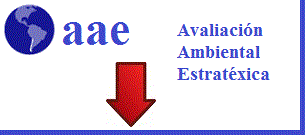

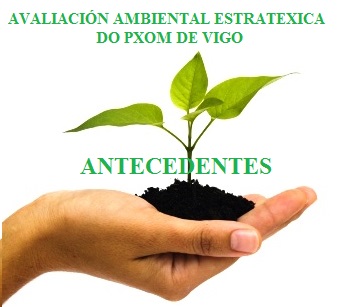
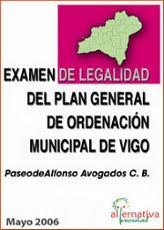


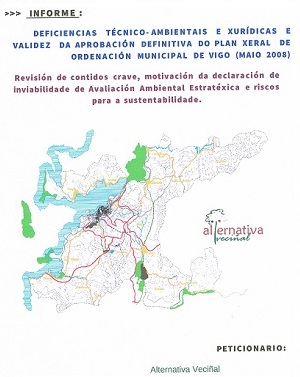


















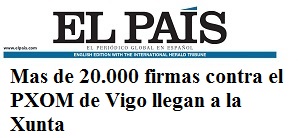

















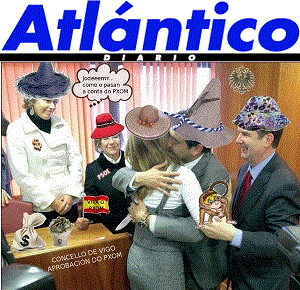
























































Ningún comentario:
Publicar un comentario